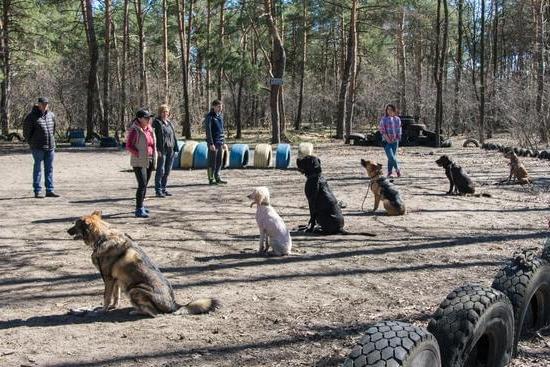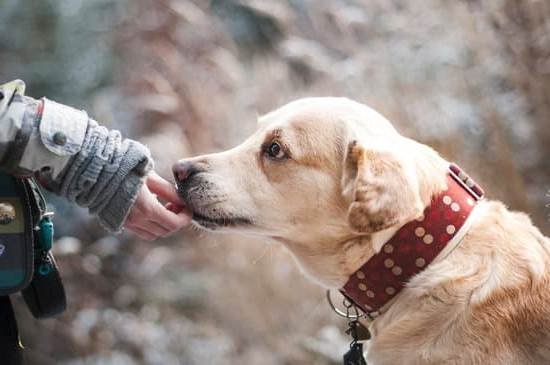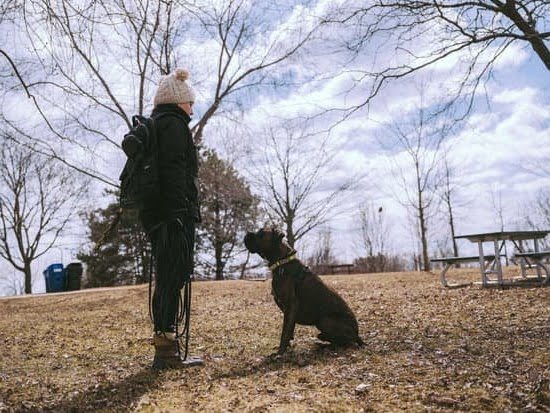Potty training a dog can be a challenging task, but using pee pads as a training tool can make the process easier and more convenient. In this article, we will delve into the essentials of how to potty train your dog with pee pads effectively. From selecting the right pee pads to establishing a routine and transitioning to outdoor potty training, we will provide you with comprehensive guidance to help your furry companion learn proper bathroom etiquette in no time.
Choosing the appropriate pee pads for your dog is crucial in ensuring successful potty training. Factors like size, material, and absorbency play a significant role in determining the effectiveness of the training process. By understanding these key elements and making informed decisions, you can create a comfortable and suitable potty area for your dog to utilize.
Setting up a designated potty area within your home is essential for consistency in potty training with pee pads. The location, size, and accessibility of this area all contribute to your dog’s understanding of where they should go to relieve themselves. Through proper introduction and positive reinforcement techniques, you can guide your furry friend towards using the pee pads correctly. Stay tuned as we explore these strategies further in the upcoming sections.
Choosing the Right Pee Pads for Your Dog
When it comes to potty training your dog with pee pads, selecting the right ones is crucial for successful training. The size of the pee pads matters, as they should be large enough to accommodate your dog comfortably. If you have a larger breed, opt for extra-large pads to prevent any accidents from missing the pad. On the other hand, smaller breeds may do well with smaller-sized pads.
Another important factor to consider when choosing pee pads is the material. Opt for highly absorbent materials that can lock in moisture and prevent leaks. Some pee pads come with built-in attractants that entice dogs to use them, which can be helpful during the initial stages of training.
Absorbency is key when selecting pee pads for potty training your dog. Look for pads that can hold a significant amount of liquid without leaking or causing spills. This is especially important if you will be away from home for extended periods and need the pad to last until you return.
| Key Consideration | Recommendation |
|---|---|
| Size of Pee Pads | Choose a size that suits your dog’s needs |
| Material | Select highly absorbent materials |
| Absorbency | Look for pads that can hold significant liquid |
By carefully considering these factors when choosing pee pads for your dog, you can set them up for success in their potty training journey. Remember to also take into account your dog’s size, age, and habits when making your selection. With the right pee pads in place, you’ll be one step closer to effectively teaching your dog how to potty train with pee pads.
Setting Up a Designated Potty Area
When it comes to potty training your dog with pee pads, setting up a designated potty area is crucial for successful training. The location of the potty area should be easily accessible to your dog at all times. Consider placing the pee pads in an area of your home where your dog spends most of their time or near their sleeping area. This will help them associate the pee pads with the appropriate place to relieve themselves.
In terms of size, make sure the designated potty area is large enough for your dog to comfortably use the pee pad without feeling cramped. If you have a larger breed dog, you may need multiple pee pads in the same area to accommodate their size. Additionally, ensure that the potty area is away from their food and water bowls as dogs tend to avoid eliminating waste near where they eat and drink.
Accessibility is also key when setting up a designated potty area for your dog with pee pads. Make sure that your dog can easily reach the pee pads whenever they need to go potty. Avoid placing obstacles or barriers that may prevent them from using the pads when necessary. By creating a convenient and appropriate potty area for your dog, you are laying down a solid foundation for successful potty training with pee pads.
| Aspect | Recommendation |
|---|---|
| Location | Place near sleeping or living areas |
| Size | Ensure it is large enough for comfortable use |
| Accessibility | Avoid obstacles and make it easy for your dog to reach |
Introducing Your Dog to the Pee Pads
Creating a Positive Association
When introducing your dog to pee pads, it is essential to create a positive association with them. Start by placing the pee pad in a designated potty area that is easily accessible for your dog. Encourage your dog to sniff and investigate the pad by using treats or toys to make it seem like a fun and exciting place. Remember to use a happy and encouraging voice to show your dog that using the pee pad is a good behavior.
Guiding Your Dog
Initially, you may need to guide your dog towards the pee pad when it’s time for them to go potty. Keep an eye on your dog’s behavior and body language, such as sniffing around or circling, as these could be signs that they need to go. Lead them gently towards the pee pad and encourage them with praise or treats when they use it correctly. Consistency is key during this training phase.
Reinforcing Good Behavior
Positive reinforcement plays a significant role in potty training with pee pads. Whenever your dog successfully uses the pee pad, shower them with praise, pets, or their favorite treats. This will help reinforce the behavior and motivate your dog to continue using the pads properly. Avoid punishing or scolding your dog for accidents, as this can create anxiety and confusion. With patience, consistency, and plenty of positive reinforcement, your dog will learn how to potty train with pee pads effectively.
Establishing a Routine
Consistency Is Key
Consistency is crucial when it comes to potty training your dog with pee pads. Establishing a routine helps your furry friend understand where and when they should do their business. Make sure to take your dog to the designated potty area regularly throughout the day, especially after meals, playtime, and naps. By consistently reinforcing this routine, you can help your dog develop good potty habits.
Timing Is Everything
Understanding your dog’s schedule and needs is essential in potty training with pee pads. Keep track of when your dog typically needs to relieve themselves and make sure to take them to the pee pad area during those times. Additionally, be patient and allow your dog enough time to use the pee pad. Remember that accidents can happen if you rush the process or ignore their signals.
Monitor Your Dog’s Progress
Monitoring your dog’s progress is vital in assessing their potty training with pee pads. Keep an eye on how consistently they are using the designated area and identify any patterns or indicators of progress. If you notice any issues or setbacks, it may be necessary to adjust your training techniques or reinforce positive behaviors. Regular monitoring allows you to track improvements and address any concerns promptly.
By maintaining consistency, timing, and monitoring progress in your potty training routine with pee pads, you can effectively teach your dog where to go potty while fostering good habits. Remember that every dog is different, so be patient and adaptable in your approach. With dedication and positive reinforcement, you’ll soon see success in potty training your furry companion with pee pads.
Dealing With Accidents
Accidents are bound to happen during the potty training process, even when learning how to potty train a dog with pee pads. It is important to remain patient and consistent in your approach to ensure that your furry friend learns the correct behavior. Here are some cleaning tips and strategies that can help you address accidents effectively and encourage your dog to use the designated potty area:
- Immediate Cleanup: When accidents occur, it is crucial to clean up the mess promptly. Use a pet-safe cleaner to eliminate any lingering odors that may attract your dog back to the same spot.
- Positive Reinforcement: Avoid scolding or punishing your dog for accidents. Instead, focus on positive reinforcement when they use the pee pads correctly. This will help reinforce good behavior and encourage them to continue using the designated potty area.
- Consistent Schedule: Stick to a regular feeding schedule and take your dog to their designated potty area frequently, especially after meals and playtime. Consistency is key in reinforcing proper potty habits.
As you navigate through the potty training process, keep in mind that accidents are a normal part of the learning curve for dogs of all ages. By following these cleaning tips and strategies, you can effectively address accidents while encouraging correct behavior in your furry companion.
- Supervision: Keep a close eye on your dog, especially during times when accidents are more likely to occur. Supervision allows you to intervene quickly if you notice any signs that they need to go potty.
- Praise and Rewards: When your dog uses the pee pads properly, be sure to offer plenty of praise and rewards. This positive reinforcement will help them associate using the designated area with receiving praise from their owner.
- Seek Professional Help: If you encounter persistent issues or struggles with potty training, don’t hesitate to seek guidance from a professional trainer or veterinarian. They can provide valuable insights and tailored solutions for helping your dog learn how to use pee pads effectively.
Gradual Transition to Outdoor Potty Training
Transitioning from using pee pads indoors to outdoor potty training is an important step in the overall potty training process for your dog. While pee pads are convenient for indoor use, the ultimate goal is for your furry friend to go potty outside. Gradually phasing out the use of pee pads will help reinforce this behavior and ensure that your dog understands where they should be going to relieve themselves.
To begin the transition, start by moving the pee pad closer to the door that leads outside. This will help your dog associate going potty with being outdoors. You can also start taking your dog outside more frequently, especially after meals or naps, to encourage them to go potty in the designated outdoor area. Make sure to praise and reward your dog when they successfully use the bathroom outside to reinforce this positive behavior.
As your dog becomes more accustomed to going potty outside, slowly reduce the number of indoor pee pads available. Instead of having multiple pads throughout the house, limit them to one specific area. Encourage your dog to go directly to that spot when they need to go potty indoors. This will help in transitioning them towards exclusively going outside for bathroom breaks. Remember to be patient during this process and continue using positive reinforcement techniques on outdoor successes.
With consistency and patience, your dog will eventually learn that their new potty area is outdoors. Keep a close eye on their progress and provide plenty of encouragement along the way. By following these gradual steps, you’ll successfully phase out pee pads and transition your pup into becoming fully house trained for outdoor bathroom breaks.
Troubleshooting Common Issues
Dealing with common issues during the potty training process is essential to ensure that your dog successfully adapts to using pee pads. While some dogs may quickly catch on to the concept, others may exhibit stubbornness, regression, or continue to have persistent accidents. Understanding how to address these challenges can make a significant difference in achieving successful potty training with pee pads.
To troubleshoot stubbornness in your dog when it comes to using pee pads, consider reinforcing positive behavior with rewards and praise. Consistency is key in establishing the desired behavior, so be patient and persevere even if your dog shows resistance initially. Additionally, evaluate the accessibility of the designated potty area and make sure it is easily accessible for your dog at all times.
If you notice regression in potty training progress, review your routine and ensure that you are maintaining consistency in timing and monitoring your dog’s cues. Dogs may regress for various reasons such as changes in their environment, stress, or health issues. By identifying the cause of regression and adapting your approach accordingly, you can help your dog get back on track with using pee pads effectively.
Persistent accidents can be frustrating but remember to remain calm and avoid punishment as it may create negative associations with potty training. Instead, clean up accidents thoroughly to remove any lingering scents that may attract your dog back to the same spot. Continue to use positive reinforcement techniques and revisit training methods if needed. With patience and persistence, you can overcome common issues during potty training with pee pads and help your dog succeed in this essential skill.
- Use positive reinforcement techniques
- Maintain consistency in routine
- Clean up accidents promptly
- Evaluate environmental factors impacting training
Celebrating Success
Successfully potty training your dog with pee pads is definitely a reason to celebrate. It requires time, patience, and consistency, but the end result is a well-trained pup who knows exactly where to go when nature calls. As you reach this milestone in your furry friend’s training journey, it’s essential to acknowledge their hard work and progress by rewarding them appropriately.
One of the most effective ways to reward your dog for successful potty training with pee pads is through positive reinforcement. This can take the form of verbal praise, treats, or even some extra playtime as a special treat. Dogs respond well to encouragement and praise, so make sure to shower them with love and attention when they use the pee pads correctly.
In addition to positive reinforcement, you can also consider other forms of celebration such as getting them a new toy or taking them on a special outing. These gestures not only reward your dog for their good behavior but also strengthen the bond between you two.
Remember that each dog is unique, so pay attention to what motivates and excites your furry companion the most when choosing how to celebrate their successful potty training achievements. With patience, consistency, and the right approach, your dog will master how to potty train with pee pads in no time.
Frequently Asked Questions
How Do I Train My Dog to Pee on a Pee Pad?
Training your dog to pee on a pee pad involves consistency and positive reinforcement. Start by placing the pee pad in a designated area and encourage your dog to use it. Reward them with treats and praise when they do so successfully.
Do Pee Pads Work for Potty Training?
Pee pads can be effective for potty training, especially for puppies or senior dogs who may have difficulty holding their bladder for long periods. They provide a convenient indoor option for bathroom breaks and can help minimize accidents around the house if used correctly.
How Do You Get a House Trained Dog to Use a Pee Pad?
Transitioning a house trained dog to use a pee pad may require some retraining and patience. Start by placing the pee pad in an area where your dog usually goes potty, gradually moving it closer to its final spot over time. Use positive reinforcement to encourage them to use the new designated area consistently.

Welcome to the blog! I am a professional dog trainer and have been working with dogs for many years. In this blog, I will be discussing various topics related to dog training, including tips, tricks, and advice. I hope you find this information helpful and informative. Thanks for reading!





